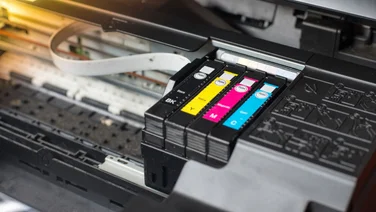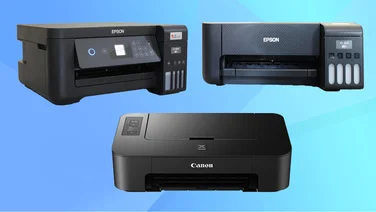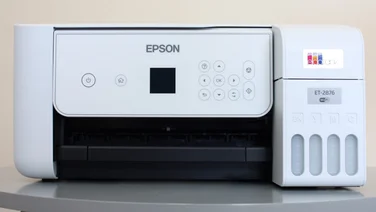To help us provide you with free impartial advice, we may earn a commission if you buy through links on our site. Learn more

HP seems to be adding ‘Pro’ to ever cheaper devices in its Officejet and LaserJet ranges. The Officejet Pro 6830 is a case in point; while ‘Pro’ suggests it lines up against small office and workgroup printers, it is in fact priced and specified for the home office market. Nomenclature aside, this is a straightforward, compact inkjet MFP with useful features including wired and wireless networking, a colour touchscreen, and automatic duplex (double-sided) printing. In the top there’s a 35-page automatic document feeder (ADF), which takes care of multi-page faxes or photocopies.

^ The web admin interface has some useful features, such as this settings backup option
The Officejet Pro 6830 looks inoffensive and feels pretty well made, with thick, stiff plastics. Though small, its colour touchscreen is excellent, responding consistently to taps and drag gestures as you navigate the intuitive menu system. Aspects of the design are frustrating, however: the strong hinges holding the scanner lid can’t extend to let it close flat on thick documents, and the 250-page paper cassette is captive in the base – it’s usually easier to load trays when you can remove them.
We tied ourselves in knots when trying an A4 photocopy after our 6×4″ photo print test: the printer thought that it was still loaded with 6×4″ paper, but we couldn’t find how to change this. After forensic examination of the menu we discovered that the only way is to unseat and replace the paper tray as you would when reloading it: we had reinserted A4 paper without needing to do so.
This is a pretty fast text printer, reaching 16.5 pages per minute (ppm) on our 25-page letter test, and managing 18.1ppm in draft. Colour speed wasn’t as impressive, but 4.4ppm isn’t bad at this price. While single copies were swift enough, the ADF wouldn’t be hurried: copying a 10-page mono document took more than two minutes, while in colour this took three and a half minutes.
The Officejet Pro 6830 uses HP’s usual TWAIN interface, which we frequently criticise for its lack of advanced options or free selection of common scan resolutions. Here things are worse, however: tested over a 100Base-T Ethernet connection it took a minute and 23 seconds to scan a 6×4″ photo at 600dpi. At 1,200dpi it needed more than five minutes, one of the slowest results we’ve timed. While the results were fine for office work, high-resolution scans appeared to have been processed to sharpen them, leaving them looking artificial.

^ Comfortably the worst PC scan software we’ve used
Happily, we’ve got no complaints about the quality of prints, which had sharp black text and reasonably bold and bright colours. There was a hint of bleed-through with duplex prints, but this isn’t uncommon when using 80gsm paper on an inkjet.

^ You’ll need the advanced settings to print without borders, or at the maximum available resolution
If you stick to the XL versions of HP’s 934 black cartridge and 935 colour cartridges, running costs work out at a reasonable 4.9p per A4 page of text and graphics. Overall, however, the Officejet Pro 6830 just has too many frustrations. We’d spend another £20 or so on the more capable Brother MFC-J5320DW – with lower running costs you could recoup the difference within about three reams of paper.
Looking for something a little different? Then check out our regularly-updated Best printer 2015 – Our inkjet, laser and MFP top picks.






